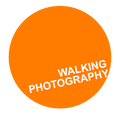In the Field: Photographing Conservation Heroes

Like many who have read it, my mind was blown when I read Curlew Moon by Mary Colwell. The book brought into focus the numerous and too often unnoticed pressures on one of our most iconic birds. Both this and her latest book Tooth, Beak and Claw are both compelling and (in my opinion) vital reads for anyone wanting to scratch the surface of practical conservation and the complex, sometimes paradoxical challenges that go with it.
As if researching and writing two ground-shifting books wasn’t enough, Mary Colwell was also instrumental in bringing the recently announced Natural History GCSE to the English curriculum. A monumental and inspiring achievement that will come to fruition in September 2025.

1/500 @f3.2 ISO 100
Another passionate pioneer for Curlew is chart-topping, iconic noughties musician David Gray. His breakthrough album White Ladder sold over seven million copies and is the UK’s 11th best selling album of the 21st Century!

1/500 @f7.1 ISO 320
The postponed White Ladder anniversary tour is happening now and for the UK and Ireland leg, he’s supporting Curlew Action with a video message and donation line that plays ahead of his performance.
The filming for the video was set at Hilltop Farm in Malham and when I was invited to shoot the BTS (behind the scenes) stills along with some portraits, I was beyond thrilled!
The day turned out exceptionally well and it's rare that you're on a shoot when everyone stops and raises their binos at the mere sight of unfamiliar avian in the distance or the call of a curlew! Amazing.
I know some of the lovely folk who attend my workshops and photo walks like to know the settings and approach from my commercial work, so I thought this might be a nice example to use. If you'd like me to share more examples like this in the future let me know in the comments...
Approach, Equipment & Settings
In the (Tamrac) Bag:
1x Canon R6 with RF 24-70 2.8L (Main Camera)
1x Canon 5d Mark IV with 24-70mm 2.8L (backup kit)
Canon 200mm 2.8L (with EF to RF adapter)
2x Profoto A1 flashguns/speedlites
Profoto AirTTL remote
Lastolite Reflector
Gitzo GK2542-80QD Mountaineer Series 2 with Flexline Head
K&F Concept DSLR Tripod (for a flashgun)
Behind the Scenes: Being Invisible

1/400 @f8 ISO 200
In most aspects of my photography, I’m usually trying to minimise my presence as much as possible. When documenting on a live set, it’s particularly important you're not noticed when the cameras are rolling. So switching to the silent electronic shutter, while ensuring I was well out of the way and not distracting anyone was key during recording.
Portraits: Making the Camera Invisible

1/500 @f8 ISO 200
Not many people like having a camera in their face. My aim, whenever taking portraits is to make the camera as unnoticeable as possible. I always do this through friendly conversation and trying to engage with the person in front of the camera. To help them relax as much as possible, I try to talk to the sitter about something that makes them passionate. In this case finding a subject was pretty easy, curlew!
The other consideration I had to make was the bright conditions, which can result in harsh shadows and squinting faces.
Turning people's backs to the sun and using flash (between filming) or a reflector helped combat those challenges.
Camera Settings:
The day started off super bright which can be tricky but also allowed me to switch to aperture priority without having to worry too much about slow shutter speeds. It also meant I had no concerns leaving ISO on auto. I'd change my aperture throughout the day between f3.2 & f11 depending on how clear I wanted the background and typically f8 for any group shots.
During filming I switched to an electronic silent shutter and then back to the mechanical shutter between takes. (I try and avoid electronic shutter on commercial shoots as the distortion due rolling shutter can sometimes be an issue).
Towards the afternoon we had periods where the sky clouded over and I’d switch to Manual, using shutter speeds of around 1/500 and an aperture range as stated above (3.2 - 11), still leaving the ISO set to auto. This meant I could ensure there was no risk of camera shake or motion blur when light levels dropped. The R6 is exceptionally good at handling higher ISOs, so noisy images were never really a risk in this scenario.
Some people may (understandably) have concerns about the 20mp size of the R6’s sensor but if you get your framing right and aren’t making heavy crops the images are easily capable of any professional production output. I have also found utilising Lightroom’s photo enhance feature produces big file sizes with little-to-no impact on quality. It’s pretty impressive and opens up a world of new possibilities. But that’s another story for another day. The resulting stills will and are being used in marketing material, news articles and in social media to help raise awareness. You can find out more about Curlew conservations at https://www.curlewaction.org/ and David Gray's White Ladder Tour (UK and Ireland leg) runs until the end of June, with details and tickets available at https://www.davidgray.com/live - If you'd like to donate to Curlew Action you can do so at https://www.curlewaction.org/davidgray/
I hope enjoyed this little insight to a really inspiring day shooting and that some of what I’ve shared might be useful in your own photography.

1/400 @f8 ISO 100




Leave a comment